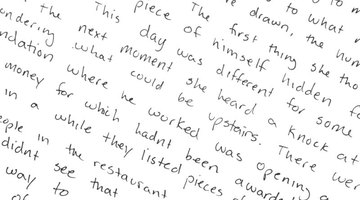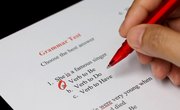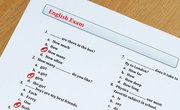The English language contains three major types of verbs: action, linking and helping. It also contains some verbs that are irregular. Action verbs express a specific action or possession that can be either physical or mental. Linking verbs don't show action and connect the subject with a noun or an adjective. Helping verbs come before action or linking verbs and provide additional information about the verb tense.
Action Verbs
Action verbs do exactly as their name says: They show action. Some examples of action verbs include jump, dance, play, give, wash, sneeze, shout and sing. Actions verbs are either transitive or intransitive. Transitive action verbs have a noun that receives the action, also known as the direct object, or they have a noun that names the object to whom or for whom the action occurred, known as the indirect object.
For example, "catches" is the transitive action verb in the sentence "Bill catches the ball." Intransitive action verbs are followed by adverbs or adverb phrases but never by direct or indirect objects. For example, "spins" is the intransitive action verb in "Leslie spins slowly on her tiptoes."
Linking Verbs
Linking verbs connect the subject of the sentence with more information about that subject. Linking verbs never show a specific action. For example, "was" is the linking verb in "The boy was a good student," and "seems" is the linking verb in "The pear seems too ripe." Among the most common types of linking verbs are "being" verbs, according to the Utah Valley University Writing Center. Examples of being verbs include am, is, are, was and were.
Helping Verbs
Helping verbs come before action or linking verbs and provide more meaning to the primary verb in the sentence. They add detail as to the tense or time frame associated with the sentence. For example, "is" is the helping verb in "Tony is climbing faster up the rope," and "did" is the helping verb in "Ann did finish washing the dishes." Helping verbs can also serve as linking verbs if there's no other verb in that verb clause. For example, "is" is a linking verb -- not a helping verb -- in "Mary is happy."
Irregular Verbs
Regular verbs contain three parts: the root word in the present tense, the simple past and the past participle. The simple past and the past participle end with the letters "ed." Irregular verbs don't follow the ending in the "ed" pattern and have alternate spellings. For example, "begin" is an irregular verb because the past tense is "began" and the past participle is "begun." Other irregular verbs include became, break, choose, drink, fall, fly, grow, lie and see.
Related Articles
References
Writer Bio
As curriculum developer and educator, Kristine Tucker has enjoyed the plethora of English assignments she's read (and graded!) over the years. Her experiences as vice-president of an energy consulting firm have given her the opportunity to explore business writing and HR. Tucker has a BA and holds Ohio teaching credentials.











